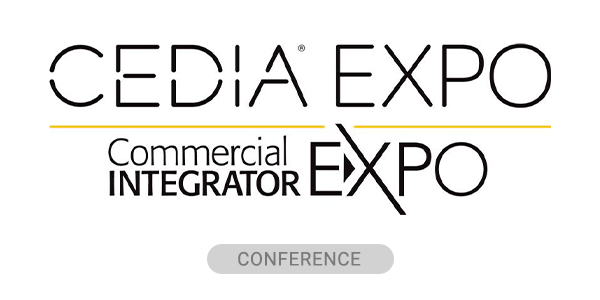Walk into a theme park and the world dazzles. Water choreographed to light, drones tracing geometry across the night sky, facades rippling with projection. Yet the real transformation humming beneath all this spectacle isn’t in pixels or speakers or the choreography of fountains. It’s in something quieter, almost invisible.
It’s in how the world begins to recognize you back.
That’s the frontier now unfolding — from theme parks to cruise ships or retail to smart cities. It’s a shift not in what we see, but in how our surroundings see us. For a century, public environments were designed for the median person, the mythical “average visitor.” Lighting, audio and signage were optimized to please most, offend few and rarely delight anyone deeply. But there is no median human anymore. Every crowd is a constellation of individuals: a child on a school trip, a traveler seeking calm, a visitor whose first language isn’t English, someone with sensory sensitivities or mobility constraints.
The next evolution in design must serve each, personally, inclusively and ethically, without betraying privacy or dignity. That realization is now rippling across industries. When Ernst & Young (EY) released the report, “How digital twin technology and AI can reimagine theme park experiences,” it described a future of agentic enterprises: intelligent, responsive systems built on three foundational pillars: Seamless Connectivity, Powerful Analytics and Smart Action.
We’ve spent years turning that vision into practice through our ecosystem: an operational network that unites data, media and response exactly as EY imagined. But once we began living inside that architecture, we discovered that three pillars, while powerful, were not enough. Connectivity, analytics and action indeed form the brainstem of intelligent environments. However, a world that truly recognizes you needs more than that. It needs a conscience to guide its choices, intuition to anticipate human needs and a bridge to continue the experience beyond the gate.
Understanding the Six Pillars
From that insight, three additional pillars emerged: Ethical Intelligence, Anticipatory Intelligence and Phygital Continuity — the missing layers that make technology not just smart but aware. Together, EY’s three pillars and our three pillars form the “Six Layers of Cognitive Experience,” a framework of a living network where intelligence is not only artificial but also ethical, anticipatory and continuous.
It is validating to see EY’s independent analysis align with our architecture as it is proof that the world is converging on a shared understanding of what the future must become: intelligent, inclusive and accountable. Because this isn’t only about sensors, analytics or digital twins. It’s about a physical world learning to personalize itself, to adapt to each of us uniquely and why that changes everything.
From Web1 to Web5: The Architecture of Trust
Every technological era inherits the logic of the one before it. Web 1.0 published information; Web 2.0 connected people; while Web 3.0 introduced trust and self-sovereignty: identity that lives in your own hands, not on someone else’s server. Web 4.0 adds empathy and emotional context. Finally, Web 5.0 fuses them all: a world where the digital and physical merge, where context, consent, and continuity define experience.
Our six-pillar architecture mirrors that evolution. Ethical Intelligence provides the trust infrastructure of Web 3.0, decentralized, transparent and private by design. Anticipatory Intelligence embodies Web 4.0’s empathy, learning through emotional feedback loops and prosodic nuance: the rhythm, warmth and tone of an AI-driven voice solution adjusting to each guest’s mood and pace. Phygital Continuity extends into Web 5.0’s promise — a persistent yet permissioned connection through digital twins, smart glasses and personal devices, where the story continues long after you’ve left the venue.
This is the architecture of trust — personalization without intrusion, emotion without manipulation, continuity without compromise. The living network is not just a technical framework; it’s the redefinition of the relationship between people and place.
Identity Without Identification
In this living network, personalization no longer depends on surveillance or stored profiles. Instead, environments use decentralized identifiers (DIDs) to confirm only what’s necessary: membership, preferred language, accessibility or age, while the rest of your identity stays encrypted and untouchable.
It’s not about knowing who you are; it’s about knowing how to treat you right. Your private information is yours, and it does not spread.
A theme park greets a child by name without ever storing that name. A museum knows a visitor prefers Spanish-language narration without asking them to sign in. A hospital display automatically enlarges its text for an older patient’s credentials.
The philosophical leap is subtle but seismic: it’s not identification; rather, it is about recognition. Recognition as respect.
The Rise of Thinking “Contracts”
Personalization at scale demands fairness, and fairness requires enforceable rules. That’s where “Smart Contracts” come in. Smart Contracts are code-based agreements that automatically execute when conditions are met.
Imagine a parent creating a digital credential for their child that includes content filters, motion thresholds, and safety parameters. When that credential enters a theme park, every attraction checks it before responding. No human oversight, no central database, no risk of misuse.
Now extend that idea: a teacher on a field trip with temporary override rights, authorized by parents, to unlock educational exhibits. A cruise guest’s profile enables dietary or wellness preferences without a single form.
Every preference, restriction and permission becomes an agreement — private, self-executing and revocable. The contract acts as both guardian and liberator. It gives control back to the individual, codified as trust.
The Phygital Continuum
Web 4.0 is where the boundaries start to blur. Digital layers fuse with architecture, creating what designers now call the phygital environment, i.e., an environment that is simultaneously physical and digital, as well as local and global.
Imagine walking through a maritime museum. You raise your glasses or phone, and a shipwreck materializes at scale, precisely where it rests beneath the sea. Its story —verified and persistent — is anchored to that location on the blockchain. The overlay isn’t just imagery; it’s evidence.
In retail, a shelf becomes a storyteller. Look at a product, and it reveals its sustainability history, its supply chain path and its cultural origin. In a hotel or cruise ship, your credential orchestrates a personalized trail, lighting that syncs to your circadian rhythm, dining that remembers your preferences and experiences that pick up where you left off.
Here, place becomes a participant. Buildings develop memory — an ethical memory that is contextual, temporary and user-owned.
The Prosody of Machines
Then comes Web 5.0 or the prosodic layer. This is the stage where emotion, context and cadence become part of the network’s language.
Prosody is the rhythm of communication — the inflection that turns information into meaning. Web 5.0 prosody applies that to environments themselves, allowing systems to respond to feeling as much as data.
For instance, in a museum gallery, if the collective body language suggests awe, then the transitions slow down and lighting softens to let the emotion breathe. In a city plaza, when tension rises such as too many bodies or raised voices, then ambient systems lower light intensity and smooth soundscapes to diffuse energy.
It’s not surveillance; it’s symphony. The analysis happens locally, transiently, leaving no record. Machines listen for the emotional key to play in harmony, then fall silent again.
This is the architecture of empathy at scale.
The Chain of Spaces
Personalization is cascading across industries like a quiet current. Themed entertainment is the proving ground. Retail follows, seeking continuity without intrusion. Hospitality adapts, weaving invisible customization into comfort. Meanwhile, healthcare experiments with consent-based flow. Moreover, smart cities — the vast, living organisms of infrastructure — are learning to sense without spying.
Everywhere, the same principles echo: decentralized identity, consent-driven logic, local emotional intelligence and spatial anchoring, all while preserving privacy.
For example, a connected museum learns from the emotional tempo of its guests. A theme park’s narrative flows seamlessly from hotel to ride to restaurant. A retail district recognizes ethical shoppers and curates sustainably sourced paths. Or a city lights its streets differently when its citizens move through grief or celebration.
Each node learns, acts and forgets. Each interaction builds a world that feels simultaneously personal and private.
It is not Big Brother. Instead, it’s a billion small guardians, acting in concert.
The Ethical Machine
In summation, we are entering an era where the line between human and environment dissolves. But unlike the data empires of Web 2.0, this time the balance of power tilts toward the individual.
The systems emerging now can see without storing, remember without recording, serve without surveilling. They create intimacy without intrusion. They are machines that know how much not to know.
When a child walks into a museum, it can greet her by name without ever keeping that name. When a guest enters a hotel, it can recall comfort without profiling. Or when a citizen crosses a city plaza, the infrastructure can feel the pulse without tracking the heart.
That is the ethical horizon: an architecture of compassion built on the mathematics of consent.
The Future of Feeling
Technology, for once, is growing gentler. It’s learning that connection is not control, and data is not destiny.
The world that’s coming will not just recognize us; it will respond to us, ethically, emotionally, and in real time. It will be fluent in our contexts, respectful of our silences, attuned to the rhythm of our presence.
Because the future of experience isn’t brighter or louder. It’s more human.
And the most astonishing thing about this living network isn’t that it will know us better, it’s that it will know when to let us go.
Maris J. Ensing, founder of Mad Systems, is inventor, systems designer and pioneer in the architecture of ethical personalization.







